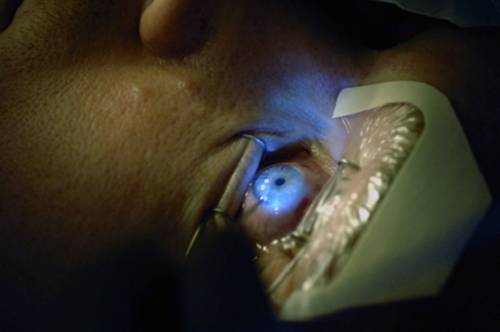Corrective eye surgery has become almost synonymous with modern freedom from glasses or contact lenses. Whether you’re tired of fumbling for your glasses in the morning or the inconvenience of wearing contact lenses, corrective eye surgery promises clear vision without daily eyewear. However, the journey to 20/20 vision isn’t just about booking a procedure; it’s about understanding the different options, their costs, and their effectiveness. Let’s explore the world of modern corrective eye surgery—with real-world examples of common medical situations, expert insights, and essential facts to guide you.
What Are the Types of Corrective Eye Surgery?
There are several types of corrective eye surgery available today, each tailored to correct specific vision issues. The most common include:
- LASIK (Laser-Assisted in Situ Keratomileusis): The most popular type of eye surgery, LASIK corrects nearsightedness, farsightedness, and astigmatism. It involves creating a small flap in the cornea, reshaping it to focus light properly onto the retina.
- PRK (Photorefractive Keratectomy): Similar to LASIK, PRK also reshapes the cornea but does not involve a corneal flap. This option is suitable for people with thin corneas or those not ideal for LASIK.
- SMILE (Small Incision Lenticule Extraction): A more recent development, SMILE is minimally invasive and involves creating a small lens-shaped piece of tissue that is extracted to reshape the cornea.
- RLE (Refractive Lens Exchange): Often used for people with presbyopia or severe refractive errors, RLE involves replacing the natural lens of the eye with an artificial one—similar to cataract surgery.
How Much Does Corrective Eye Surgery Cost?
The cost of corrective eye surgery varies widely based on the type of procedure, the surgeon’s experience, and the technology used. Here’s a general overview of the costs in the United States:
- LASIK: $2,000 – $3,000 per eye
- PRK: $1,800 – $2,500 per eye
- SMILE: $2,500 – $3,500 per eye
- RLE: $3,500 – $5,000 per eye
For most people, LASIK and SMILE are the go-to procedures, but price often plays a big role in decision-making. Dr. Emily Johnson, an experienced ophthalmologist, shares that “patients need to look beyond price and prioritize safety and experience. The cheapest option may not always be the best for your eyes.” She emphasizes that choosing the right surgeon—one with ample experience and high-quality equipment—is just as important as the procedure itself.
Real-Life Scenarios
Situation 1: LASIK for Improved Daily Convenience
A common scenario involves individuals who struggle with wearing glasses or contact lenses during their daily activities. For example, many people experience fogging of their glasses while wearing a mask, or discomfort from contact lenses during long work hours. In such cases, LASIK can be a life-changing option. Patients who choose LASIK often cite the convenience and freedom of being able to see clearly without the hassle of eyewear. Typically, LASIK costs around $4,000 to $5,000 for both eyes, depending on the clinic and location.
Situation 2: PRK for Patients with Thin Corneas
Another common situation is for patients with thin corneas, which may make them unsuitable candidates for LASIK. In these cases, PRK is often recommended. PRK takes a bit longer to heal compared to LASIK, but it offers similar vision correction results. Patients undergoing PRK often report a longer recovery time, but with equally satisfactory outcomes in the end. The cost for PRK usually ranges from $3,200 to $4,000 for both eyes.
Expert Opinions and Considerations
Dr. Sarah Green, a leading ophthalmologist specializing in laser eye surgeries, emphasizes that while cost is a significant factor, it’s crucial to choose a procedure that best matches your lifestyle and eye health. “LASIK is great for a quick recovery, but PRK is a fantastic option for those who may not be ideal candidates for LASIK,” she explains. “SMILE, on the other hand, is less invasive and can be a game-changer for those who prefer a less intense procedure.”
She also highlights that RLE is a particularly interesting choice for older patients. “If you’re over 45 and starting to struggle with reading glasses, RLE can address those issues while also correcting other refractive errors. It’s more expensive, but it’s also more versatile.”
Geographic Variations in Cost
Where you live plays a role in determining the cost of corrective eye surgery. Prices can vary significantly depending on location. Here’s a breakdown:
- Rural Areas: $1,500 – $2,000 per eye
- Suburban Areas: $2,000 – $2,800 per eye
- Urban Centers: $2,500 – $3,500 per eye
In urban centers, such as Los Angeles or New York City, the high demand and availability of the latest technologies often drive up the costs. Conversely, in smaller towns, you might find more affordable options, but it’s important to ensure the surgeon has experience with the specific type of surgery you need.
Benefits vs. Risks: Is It Worth It?
For most people, corrective eye surgery is worth the cost—but it’s not without its risks. The most commonly reported side effects include dry eyes, glare, and halos around lights, particularly during the first few months after surgery. However, the vast majority of patients are satisfied with their results.
Individuals who undergo SMILE, for example, often report a quicker recovery and less invasive experience, making it an attractive option for those seeking an alternative to LASIK. Patients who choose PRK may need to be more patient during recovery, but eventually experience clear and stable vision.
The Emotional and Lifestyle Value
It’s not just about the money or the medical aspects. Corrective eye surgery offers an emotional value that’s hard to quantify. Imagine waking up and seeing clearly without needing to reach for your glasses. Dr. Green notes, “The positive change in quality of life for most patients is truly remarkable. It’s not just about vision—it’s about freedom.”
For some, the high upfront cost might be daunting, but many patients find that the convenience and emotional boost they get from perfect vision is worth every penny. As many patients sum it up: “It’s not just eye surgery; it’s an investment in yourself.”
Final Thoughts: What You Need to Know
Corrective eye surgery is an ever-evolving field that offers several options to suit different needs and budgets. Whether you choose LASIK, PRK, SMILE, or RLE, the key is to find a reputable surgeon and the right procedure for your eyes. Costs may be significant, but for many, the ability to see clearly without glasses or contacts is priceless—a true investment in their quality of life.





